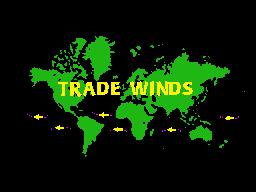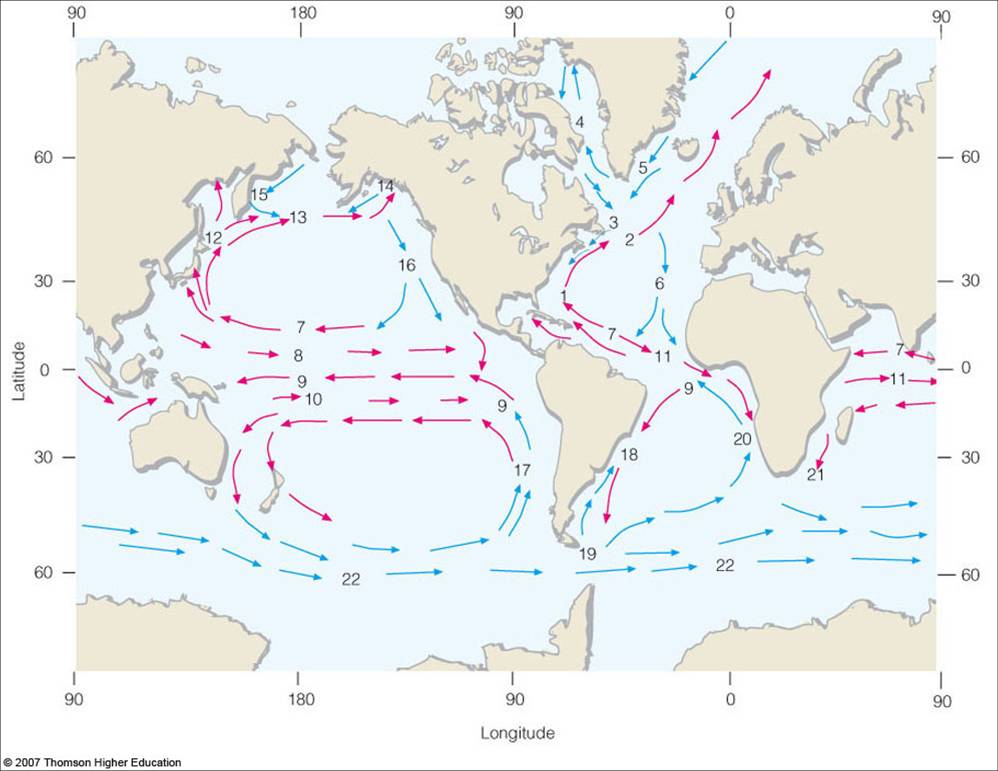
Driven by forces such as wind, tides, and gravity, currents keep our oceans in constant motion. Currents move large amounts of water great distances. Countless currents have been named, but the seven major ones are the West Wind Drift (or the Antarctic Circumpolar Current), East Wind Drift, the North and South Equatorial currents, the Peru Current, the Kuroshio Current and the Gulf Stream. These currents flow in large rotating loops called gyres. In the Northern Hemisphere, gyres spin in a clockwise direction, and in the Southern Hemisphere, gyres spin in a counterclockwise direction. This is because of Earth's spinning rotation and is called the Coriolis Effect.
Large surface currents are mainly driven by winds that blow year round. The winds at the equator are called the northeast and southeast trade winds. At the mid-latitudes, the winds are called the westerlies, and at the highest latitudes, the winds are called the polar easterlies. These winds blow in one direction all year.
Two of the largest currents are the Antarctic Circumpolar Current and the Kuroshio Current. The Antarctic Circumpolar Current, sometimes called the West Wind Drift, circles eastward around Antarctica. The Kuroshio Current, which is located just off Japan's coast, travels up to 75 miles a day at a speed of up to 3 miles per hour.
(http://www.onr.navy.mil/focus/ocean/motion/currents1.htm)
The Role of Wind
 Surface
ocean currents are mainly caused by wind. The winds that most affect the
oceans' currents are:
Surface
ocean currents are mainly caused by wind. The winds that most affect the
oceans' currents are:
The Westerlies (40-50 degree latitudes) blow west to east.Both of these winds are a result of warm air from the tropics moving to the poles and the Coriolis effect (that due to the rotation of the Earth, water moves clockwise in the Northern Hemisphere and counter-clockwise in the Southern Hemisphere). Because these huge circular currents are blocked by continents, smaller (though still giant) ocean current circles called gyres are formed.
The Trade Winds (20 degree latitudes) blow east to west.

(http://www.mbgnet.net/salt/sandy/currents.htm)
No comments:
Post a Comment